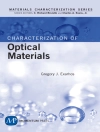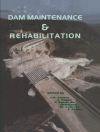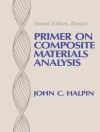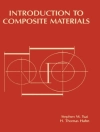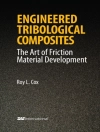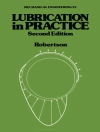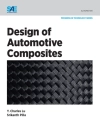This book is an essential resource for anyone looking to understand the cutting-edge applications and evolving technologies of Unmanned Aerial Systems, showcasing how they enhance safety and efficiency in monitoring, emergency response, and smart city development.
With the evolution of Unmanned Aircraft Systems (UAS), its applications can be observed in the fields of monitoring for fire detection, sustainable computing, emergencies, and law enforcement. They can be useful for monitoring or screening applications, as well as the deployment of smart cities, security monitoring, and communication establishments at rare locations or unapproachable locations. Thus, the wireless ad-hoc networks of Unmanned Aerial Vehicles (UAVs) and infrastructure-based UAVs can be utilized in this proposal. Unmanned aircraft systems (UAS) extend human potential and allow us to execute dangerous or difficult tasks safely and efficiently, saving time, money, and, most importantly, lives. UAS can help police, fire, and other public workers save lives in emergencies like natural disasters, locate missing animals and children, or help fight fighters.
Unmanned Aircraft Systems contains novel contributions and emerging trends in the area of Unmanned Aerial Vehicles (UAV), drones, and aircraft without a human pilot aboard. It has three segments incorporating technological advancements and future trends in UAS, the policies and security aspects of UAVs, and their applications as an intelligent system. Along with these state-of-the-art techniques, this book also incorporates advances in AI and machine learning, deep learning, Io T technology, cybersecurity and Blockchain, UAV regulation policies in the United States and Europe, SOTA in ITS, and many more technological advancements, which makes this book the pioneer and benchmarking reference in these areas.
Cuprins
Preface xix
1 Unmanned Aircraft Systems (UASs): Technology, Applications, and Challenges 1
Tarun Kumar Vashishth, Vikas Sharma, Kewal Krishan Sharma, Bhupendra Kumar, Sachin Chaudhary and Shahanawaj Ahamad
1.1 Introduction 2
1.2 UAS Fundamentals 11
1.3 Literature Review 16
1.4 UAS Applications 20
1.5 UAS Regulations and Challenges 24
1.6 Technological Advancements and Future Trends 34
1.7 Conclusion 50
1.8 Future Scope 55
2 Enhancing the Effectiveness of Drones to Monitor Mars Surface Exploration: A Study 65
Harneet Kour, Sachin Kumar Gupta, Shachi Mall, Radha Raman Chandan, Mohd Najim and Pankaj Jain
2.1 Introduction 66
2.2 UAVs’ Exploration on Earth’s Surface 68
2.3 UAVs’ Exploration on Mars’ Surface 73
2.4 In-Depth Analysis of UAVs for Mission Planning and Safety: A Martian Body 76
2.5 Modeling and Simulation of Martian UAVs 85
2.6 Conclusion and Future Scope 89
3 Io T-Enabled UAV: A Comprehensive Review of Technological Change in Indian Farming 93
Rahul Joshi and Krishna Pandey
3.1 Introduction 94
3.2 Utilization of Drones in Agricultural Practices 97
3.3 Types of Drones and Sensors 101
3.4 Agricultural Drone Industry in India 107
3.5 Competitive Analysis of the Drone Market in the Agriculture Sector in India 113
3.6 Revenue and Growth of the Indian Drone Market 120
3.7 Successful Case Studies of Agriculture Drone in India 123
3.8 Regulatory Frameworks Impacting the Use of Drones in Agriculture 126
3.9 Conclusion and Future Directions 130
4 Applications of AI in UAVs Using In-Flight Parameters 137
Yogesh Beeharry and Raviduth Ramful
4.1 Introduction 138
4.2 Methodology 151
4.3 Results for Instantaneous Power versus Wind Speed 154
4.4 Results for Instantaneous Power versus Wind Speed and Wind Angle 163
4.5 Comparative Analysis of Results 174
4.6 Conclusion and Future Scope 174
5 AVFD: Autonomous Vision-Based Fleet Management for Drone Delivery Optimization in E-Commerce 181
Vu Duy Trung, Phuong Anh Nguyen, Toh Yan Chi, Phung Thao Vi, Satyam Mishra and Le Anh Ngoc
5.1 Introduction 182
5.2 Literature Review 185
5.3 Methodology 192
5.4 Results and Discussion 208
5.5 Conclusion and Future Scope 215
6 STEDSDR: Simulated Testing and Evaluation of Drone Surveillance for Disaster Response 225
Yan Chi Toh, Phuong Anh Nguyen, Satyam Mishra, Vu Duy Trung, Phung Thao Vi and Le Anh Ngoc
6.1 Introduction 226
6.2 Literature Review 229
6.3 Research Methodology 231
6.4 Data Collection and Analysis 241
6.5 Results and Discussion 252
6.6 Conclusion, Recommendations, and Future Scope 255
7 Review on Assessment of Land Degradation in Watershed Using Geospatial Technique Based on Unmanned Aircraft Systems 263
Soumya Pandey, Neeta Kumari and Lovely Mallick
7.1 Introduction 264
7.2 Processes of Land Degradation 269
7.3 Geospatial Application in Addressing the Land Degradation 277
7.4 Components of Unmanned Aircraft Systems (UASs) 281
7.5 Data Collection and Processing for UAVs 283
7.6 Advantages of UAS Integrated with GIS for Land Degradation Monitoring 295
7.7 Application of UAV in Land Degradation Monitoring and Assessment 297
7.8 Conclusion and Future Scope 298
8 Unmanned Aircraft Systems (UAS), Surveillance, Risk Management to Cybersecurity and Legal Regulation Landscape: Unraveling the Future Analysis, Challenges, Demand, and Benefits in the High Sky Exploring the Strange New World 313
Bhupinder Singh
8.1 Introduction 314
8.2 Evolution of Unmanned Aircraft Systems: Origin and Widespread Applications in Commercial and Civilian Sectors 322
8.3 Surveillance Applications and Ethical Considerations: Advantages and Challenges Associated with Surveillance Operations 326
8.4 Risk Management and Safety Aspects within the UAS Ecosystem 328
8.5 Cybersecurity Risks and Challenges in UAS: Highlighting Vulnerabilities, Potential Threats, and Need for Robust Cybersecurity Measures to Protect UAS Systems from Hacking, Data Breaches, and Malicious Activities 331
8.6 Legal and Regulatory Framework: Airspace Integration and Challenges of Creating Adaptable Frameworks to Accommodate Evolving UAS Technologies 334
8.7 Benefits of UAS Adoption: Economic, Environmental, and Societal Advantages to Enhance Efficiency and Reduce Costs via Contributing Toward Agriculture, Logistics, and Disaster Management 337
8.8 Challenges and Mitigation Strategies: UAS Integration and Offer Strategies to Mitigate Issues of Privacy Concerns, Regulatory Hurdles, Technological Limitations, and Public Perception 341
8.9 Conclusion and Future Scope 346
9 Navigating the Future: Unmanned Aerial Systems in Io T Paradigms 355
Chandrakant Mahobiya, Sailesh Iyer, Mahendra Verma, Prabhat Ranjan Mishra and Shailendra Kumar Bohidar
9.1 Introduction 356
9.2 The Anatomy of UAS and Io T 358
9.3 Technical Infrastructure 370
9.4 Application and Use Cases 375
9.5 Ethical and Legal Dimensions 378
9.6 Challenges and Opportunities 379
9.7 Conclusion and Future Scope 382
10 Dynamic Modeling and Designing Robust MIMO Controller for Rudderless Flying-Wing UAVs 387
Sevda Rezazadeh Movahhed and Mohammad Ali Hamed
10.1 Introduction 388
10.2 Literature Review 391
10.3 Materials and Methods 399
10.4 Proposed Methodology: LQG/LTR Method 406
10.5 Results and Discussion 411
10.6 Conclusion and Future Scope 423
11 Enhancing Security for Unmanned Aircraft Systems in Io T Environments: Defense Mechanisms and Mitigation Strategies 429
C.V. Suresh Babu and Abhinaba Pal
11.1 Introduction 430
11.2 Security Challenges in Io T-Enabled UAS 434
11.3 Case Study: Sky Software Incident 441
11.4 GPS Spoofing Attacks on UAS 443
11.5 Sensor Based Attacks on UAS 457
11.6 Trust Architectures for UAS Security 462
11.7 Subsequent Trends in UAS Security 469
11.8 Conclusion and Future Scope 470
12 Foldable Quadcopters: Design, Analysis, and Additive Manufacturing for Enhanced Aerial Mobility 477
Yash H. Thummar and Mohammad Irfan Alam
12.1 Background and Introduction 478
12.2 Design Methodology 483
12.3 Analysis of Design 492
12.4 Fabrication Using 3D Printing 494
12.5 Components and Assembly 500
12.6 Testing and Verification 506
12.7 Making to the First Flight 510
12.8 Discussions and Applications 512
12.9 Conclusions and Future Scope 513
13 A Perspective Analysis of UAV Flight Control Architecture Incorporating Ground Control Stations and Near-Actual Techniques 519
Imran Mir, Muhammad Amir Tahir and Suleman Mir
13.1 Introduction 520
13.2 UAV Dynamics and Control Algorithms 523
13.3 Near-Actual Simulation Techniques 532
13.4 Visualization Software 541
13.5 Ground Control Station 545
13.6 Existing Challenges 550
13.7 Conclusion 552
14 Optimal Transportation System Based on Adaptive Federated Learning Techniques for Healthcare Io V (HIo V) 563
Pallati Narsimhulu, Rashmi Sahay and Premkumar Chithaluru
14.1 Introduction 564
14.2 Impacts of AI/ML/FL Techniques in HIo V 579
14.3 Research Challenges in Io V Transportation 592
14.4 Comparative Study 598
14.5 Conclusions and Future Scope 605
References 606
Index 609
Despre autor
Sachin Kumar Gupta, Ph D, is an associate professor in the Department of Electronics and Communication Engineering, Central University of Jamu, India. He has published over 120 research articles in reputed national and international journals and prestigious conference proceedings and is the author of many book chapters, as well as editing numerous books.
Manoj Kumar, Ph D, is an associate professor at the Faculty of Engineering and Information Sciences, University of Wollongong, Dubai with over 11 years of experience in academics and corporations. He has published over 100 articles, ten patents, and over ten books with reputed publishers. Additionally, he works in various inter-disciplinary areas including data security, forensics, computer networks, image processing, computer vision, machine learning, and Internet of Things.
Anand Nayyar, Ph D, is a professor and scientist, as well as the Vice Chairman of Research at the School of Computer Science, Duy Tan University, Da Nang, Vietnam, as well as the Director of Io T at Intelligent Systems Lab. He is a certified professional with over 150 professional certificates and has published over 200 research papers, over 100 papers in international conferences and over 70 book chapters. Additionally, he has 18 Australian patents, 15 German patents, four Japanese patents, 13 UK patents, 41 Indian patents, one US patent, three Indian copyrights, and two Canadian copyrights to his credit.
Shubham Mahajan, Ph D, is an assistant professor at Amity University, India. He has eight Indian, one Australian, and one German patent to his credit in the area of artificial intelligence and image processing. He has authored and co-authored more than 50 publications including peer-reviewed journals and conferences. His main research interests include image processing, video compression, image segmentation, fuzzy entropy, and nature-inspired computing methods with applications in optimization, data mining, machine learning, robotics, and optical communication.


